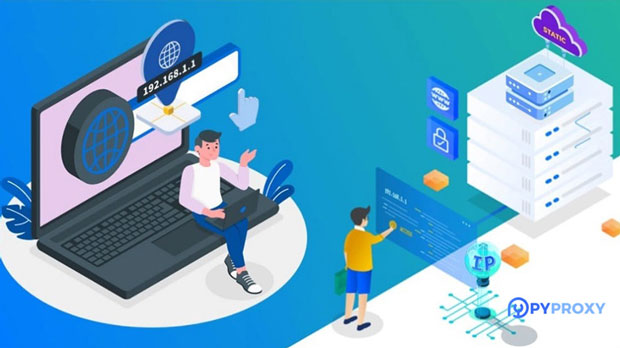Common Problems and Solutions for Creating SOCKS5 proxies
When setting up a socks5 proxy, users often encounter a range of challenges. These problems can arise during the installation process, configuration, or connection setup. Whether you're attempting to enhance privacy, bypass geographical restrictions, or optimize your network, understanding the common issues and their respective solutions is key to ensuring a smooth experience. In this article, we will explore frequent issues when creating a SOCKS5 proxy, along with practical solutions to help resolve them, ensuring that your proxy works efficiently and securely. 1. Issue: Incorrect SOCKS5 Proxy ConfigurationOne of the most frequent issues when creating a SOCKS5 proxy is incorrect configuration. This can involve various aspects, such as wrong server addresses, authentication settings, or port configurations. Misconfigurations lead to connectivity issues or prevent the proxy from functioning altogether.Solution: Double-Check Configuration SettingsBefore troubleshooting deeper, ensure that all configuration details are correct. Verify the proxy server’s IP address, port number, and authentication credentials (if applicable). For socks5 proxies, the default port is usually 1080, but some setups may require a custom port. Additionally, confirm that the username and password (if required) are correctly entered.Furthermore, ensure that the firewall or any security software on your computer or network is not blocking the SOCKS5 proxy port. Sometimes, firewalls may prevent access to non-standard ports, leading to connectivity issues. Make sure the necessary ports are open in your firewall settings.2. Issue: Authentication FailureSOCKS5 proxies often require authentication (username and password) to ensure that only authorized users can access the network. Failure to enter the correct credentials or configure the authentication properly can lead to access denial.Solution: Verify Authentication CredentialsIf you’re experiencing authentication issues, double-check your login credentials. Make sure that the username and password match exactly what is provided by your SOCKS5 proxy service. Pay attention to case sensitivity or any extra spaces that might be inadvertently included. Some SOCKS5 proxies also support advanced authentication methods like two-factor authentication (2FA) or IP whitelisting. Ensure that any advanced security settings are configured properly to avoid authentication errors.3. Issue: SOCKS5 Proxy Not Responding or Connection TimeoutA common issue that many users face is the SOCKS5 proxy not responding or experiencing connection timeouts. This problem may be due to network congestion, incorrect DNS settings, or issues with the proxy server itself.Solution: Troubleshoot Network ConnectivityStart by verifying the network connectivity on your device. Ensure that your internet connection is stable and active. Check if other websites or services are accessible, which could help rule out general connectivity issues. If the internet is working fine, try restarting the device and reconnecting to the SOCKS5 proxy.Next, verify the DNS settings on your device. Incorrect DNS settings can prevent the proxy from establishing a successful connection. You may want to switch to a more reliable DNS server or reset your DNS settings to default values.Finally, if the proxy server is still unresponsive, it may be down or experiencing issues. Check the server’s status if you have access to this information or try switching to a different server if you have alternative options.4. Issue: Slow Connection Speeds with SOCKS5 ProxyWhile SOCKS5 proxies are generally designed to offer fast and reliable connections, users sometimes report slow speeds when using them. Slow proxy performance can significantly hinder your browsing, streaming, or data transfer activities.Solution: Optimize Network PerformanceSlow connection speeds can be attributed to several factors, such as network congestion, server distance, or throttling. To troubleshoot this, start by selecting a SOCKS5 server that is geographically closer to you. The farther away the server is, the higher the latency, which can result in slower speeds.Additionally, check if your internet service provider (ISP) is throttling your bandwidth. Some ISPs limit connection speeds when they detect high traffic, such as proxy usage. In such cases, try using a different network or contact your ISP to inquire about potential speed restrictions.If your proxy provider offers multiple servers, try switching to a different one to see if this improves the speed. Additionally, ensure that your local network is not overburdened with other devices or heavy usage, as this can also affect performance.5. Issue: SOCKS5 Proxy Blocking Certain Websites or ServicesSometimes, SOCKS5 proxies may block specific websites or services due to regional restrictions, IP blocking, or configuration issues. This is especially common when attempting to access geo-restricted content or websites that have aggressive anti-proxy measures in place.Solution: Use a Different Server or Adjust Proxy SettingsIf you’re unable to access specific websites or services, try connecting to a different SOCKS5 server. Many proxy providers offer servers located in different regions, so switching to a server in another country might bypass these restrictions.If that doesn’t work, consider using proxy settings that support obfuscation or encryption. These techniques can help bypass restrictions and make your proxy traffic appear as regular HTTPS traffic, preventing detection by websites and services that block proxies.Some advanced configurations also allow users to set custom DNS servers or apply different encryption methods, which may enhance the reliability and bypass geo-blocking techniques.6. Issue: SOCKS5 Proxy Not Working with Specific ApplicationsIn some cases, SOCKS5 proxies may work well with a browser but not with other applications, such as torrent clients, VoIP services, or custom software. This can happen because certain applications have specific proxy configuration requirements or do not support SOCKS5 proxy connections.Solution: Configure Proxy Settings in Each ApplicationTo resolve this issue, you need to configure the proxy settings in each application manually. Most modern applications that support proxies (like torrent clients, FTP software, etc.) allow you to specify a socks5 proxy server in their settings.Make sure that you enter the correct SOCKS5 proxy details (IP, port, and authentication credentials) for each individual application. Also, check whether the application supports SOCKS5 proxies, as some only support HTTP or HTTPS proxies.If the application does not have built-in support for SOCKS5, you can use a system-wide proxy setting on your operating system. This will route all your traffic, including that from unsupported applications, through the SOCKS5 proxy.ConclusionCreating and maintaining a SOCKS5 proxy can seem challenging, especially when facing common issues like configuration errors, slow speeds, or authentication failures. However, by understanding these issues and applying the appropriate solutions, you can ensure a seamless and efficient experience. Regularly double-checking your settings, optimizing your network performance, and ensuring compatibility with various applications are key steps in successfully implementing a SOCKS5 proxy. Troubleshooting effectively and knowing when to adjust settings can help you harness the full potential of your SOCKS5 proxy for enhanced privacy and performance.
2025-01-03

























































